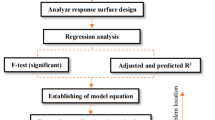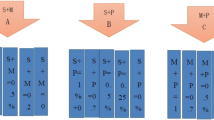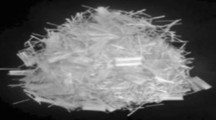Abstract
Using fibers in concrete is an effective method to enhance the tensile behavior and energy absorption capacity of concrete structures. Synthetic fibers derived from petroleum products, such as polypropylene fibers, are preferred in concrete due to their low cost, easy workability, high strength, low density, and immense chemical resistance. Depending on their length and performance in concrete, polypropylene fibers can be classified into microfibers and macrofibers. This study investigates the change in fresh and hardened properties of concrete mixtures containing macro synthetic polypropylene fibers (PPF). The study presents a comparative examination of the slump values of concrete mixtures by using five different ratios in a range of 0.1–0.5% of the total volume in the mixtures. Furthermore, it specifies the mechanical, dimensional stability, and durability properties of the mixtures. The present study reveals three key findings: first, the addition of PPF to the mixtures that leads to a minor change in the compressive strength, flexural strength, and modulus of elasticity while significantly increases the splitting tensile strength and ductility. Second, the findings suggest that the increase in fiber ratio of the concrete mixtures reduces both the weight-loss values caused by abrasion and the length-change values caused by drying shrinkage, thus improving the durability performance. Finally, the current study found a positive effect on the dimensional stability of the mixtures.
Graphical abstract



















Similar content being viewed by others
Data availability
No data, models, or code were generated or used during the study.
References
Shaikh FUA (2013) Review of mechanical properties of short fibre reinforced geopolymer composites. Constr Build Mater 43:37–49. https://doi.org/10.1016/j.conbuildmat.2013.01.026
Kizilkanat AB, Kabay N, Akyüncü V, Chowdhury S, Akça AH (2015) Mechanical properties and fracture behavior of basalt and glass fiber reinforced concrete: an experimental study. Constr Build Mater 100:218–224. https://doi.org/10.1016/j.conbuildmat.2015.10.006
Baradan B, Yazici H, Aydin S (2015) Concrete, 2nd edn. Dokuz Eylül University Faculty of Engineering Publications (in Turkish), Izmir
Şimşek O (2016) Concrete and concrete technology (types-properties-experiments), 5th edn. Seçkin Publishing Inc (in Turkish), Ankara
Thomas J, Ramaswamy A (2007) Mechanical properties of steel fiber-reinforced concrete. J Mater Civ Eng 19:385–392. https://doi.org/10.1061/(ASCE)0899-1561(2007)19:5(385)
Alberti MG, Enfedaque A, Gálvez JC (2017) Fibre reinforced concrete with a combination of polyolefin and steel-hooked fibres. Compos Struct 171:317–325. https://doi.org/10.1016/j.compstruct.2017.03.033
Banthia N, Gupta R (2006) Influence of polypropylene fiber geometry on plastic shrinkage cracking in concrete. Cem Concr Res 36:1263–1267. https://doi.org/10.1016/j.cemconres.2006.01.010
Aly T, Sanjayan JG, Collins F (2008) Effect of polypropylene fibers on shrinkage and cracking of concretes. Mater Struct 41:1741. https://doi.org/10.1617/s11527-008-9361-2
Ilhan M (2018) Effect of utilization of drying-shrinkage reducing admixture and fiber on fresh state, mechanical and some durability properties of cementitious systems. Master thesis, Bursa Uludag University, Turkey
Mardani-Aghabaglou A, Özen S, Altun MG (2018) Durability performance and dimensional stability of polypropylene fiber reinforced concrete. J Green Build 13:20–41. https://doi.org/10.3992/1943-4618.13.2.20
Li D, Liu S (2020) Macro polypropylene fiber influences on crack geometry and water permeability of concrete. Constr Build Mater 231:117128. https://doi.org/10.1016/j.conbuildmat.2019.117128
Mardani-Aghabaglou A, Tuyan M, Yılmaz G, Çakır ÖA, Ramyar K (2013) The effect of different fibers on the fresh and mechanical properties of self-compacting concrete. Ready-Mixed Concrete Congress, İstanbul
Neville AM (2012) Properties of Concrete, 5th edn. Pearson, London
Kosmatka SH, Kerkhoff B, Panarese WC (2003) Design and Control of Concrete Mixtures, 13th edn. Portland Cement Association, Illinois
Mehta PK, Monteiro PJM (2014) Concrete Microstructure, Properties, and Materials, 4th edn. McGraw-Hill Press, United States
Mohajerani A, Hui SQ, Mirzababaei M, Arulrajah A, Horpibulsuk S, Abdul Kadir A, Maghool F (2019) Amazing types, properties, and applications of fibers in construction materials. Materials 12:2513. https://doi.org/10.3390/ma12162513
Beşergil B (2003) Polymer Chemistry. Gazi Publishing House, Ankara
Karahan O (2006) Properties of Fiber Reinforced Fly Ash Concrete. PhD thesis, Çukurova University Institute of Science and Technology, Turkey
Latifi MR, Biricik Ö, Mardani-Aghabaglou A (2022) Effect of the addition of polypropylene fiber on concrete properties. J Adhes Sci Technol 36:345–369. https://doi.org/10.1080/01694243.2021.1922221
Nguyen H, Kinnunen P, Carvelli V, Illikainen M (2019) Durability of ettringite-based composite reinforced with polypropylene fibers under combined chemical and physical attack. Cem Concr Compos 102:157–168. https://doi.org/10.1016/j.cemconcomp.2019.04.021
Kalıpcılar İ, Mardani-Aghabaglou A, Sezer Gİ, Altun S, Sezer A (2016) Assessment of the effect of sulfate attack on cement stabilized montmorillonite. Geomech Eng 10:807–826. https://doi.org/10.12989/gae.2016.10.6.807
Karimipour A, Ghalehnovi M, de Brito J, Attari M (2020) The effect of polypropylene fibres on the compressive strength impact and heat resistance of self-compacting concrete. Structures 25:72–87. https://doi.org/10.1016/j.istruc.2020.02.022
Wongprachum W, Sappakittipakorn M, Sukontasukkul P, Chindaprasirt P, Banthia N (2018) Resistance to sulfate attack and underwater abrasion of fiber reinforced cement mortar. Constr Build Mater 189:686–694. https://doi.org/10.1016/j.conbuildmat.2018.09.043
Wang J, Dai Q, Si R, Guo S (2019) Mechanical, durability, and microstructural properties of macro synthetic polypropylene (PP) fiber-reinforced rubber concrete. J Clean Prod 234:1351–1364. https://doi.org/10.1016/j.jclepro.2019.06.272
Ding M, Zhang F, Ling X, Lin B (2018) Effects of freeze-thaw cycles on mechanical properties of polypropylene fiber and cement stabilized clay. Cold Reg Sci Technol 154:155–165. https://doi.org/10.1016/j.coldregions.2018.07.004
Park SB, Lee BC (2004) Studies on expansion properties in mortar containing waste glass and fibers. Cem Concr Res 34:1145–1152. https://doi.org/10.1016/j.cemconres.2003.12.005
Wang Q, Ding Y, Zhang Y, Castro C (2021) Effect of macro polypropylene fiber and basalt fiber on impact resistance of basalt fiber-reinforced polymer-reinforced concrete. Struct Concr 22:503–515. https://doi.org/10.1002/suco.201900482
Behnood A, Ghandehari M (2009) Comparison of compressive and splitting tensile strength of high-strength concrete with and without polypropylene fibers heated to high temperatures. Fire Saf J 44:1015–1022. https://doi.org/10.1016/j.firesaf.2009.07.001
Serrano R, Cobo A, Prieto MI, De las Nieves González M (2016) Analysis of fire resistance of concrete with polypropylene or steel fibers. Constr Build Mater 122:302–309. https://doi.org/10.1016/j.conbuildmat.2016.06.055
Rashid MU (2020) Experimental investigation on durability characteristics of steel and polypropylene fiber reinforced concrete exposed to natural weathering action. Constr Build Mater 250:118910. https://doi.org/10.1016/j.conbuildmat.2020.118910
Guerini V, Conforti A, Plizzari G, Kawashima S (2018) Influence of steel and macro-synthetic fibers on concrete properties. Fibers 6:47. https://doi.org/10.3390/fib6030047
El-Newihy A, Azarsa P, Gupta R, Biparva A (2018) Effect of polypropylene fibers on self-healing and dynamic modulus of elasticity recovery of fiber reinforced concrete. Fibers 6:9. https://doi.org/10.3390/fib6010009
Yew MK, Mahmud HB, Ang BC, Yew MC (2015) Influence of different types of polypropylene fibre on the mechanical properties of high-strength oil palm shell lightweight concrete. Constr Build Mater 90:36–43. https://doi.org/10.1016/j.conbuildmat.2015.04.024
Dachowski R, Kostrzewa P (2016) The use of waste materials in the construction industry. Procedia Eng 161:754–758. https://doi.org/10.1016/j.proeng.2016.08.764
Yiğit B, Salihoğlu G, Mardani-Aghabaglou A, Salihoğlu NK, Özen S (2020) Recycling of sewage sludge incineration ashes as construction material. J Fac Eng Archit Gaz 35:1647–1664. https://doi.org/10.17341/gazimmfd.544678
Kilmartin-Lynch S, Saberian M, Li J, Roychand R, Zhang G (2021) Preliminary evaluation of the feasibility of using polypropylene fibres from COVID-19 single-use face masks to improve the mechanical properties of concrete. J Clean Prod 296:126460. https://doi.org/10.1016/j.jclepro.2021.126460
Sohaib N, Seemab F, Sana G, Mamoon R (2018) Using Polypropylene Fibers in Concrete to achieve maximum strength. Eighth International Conference on Advances in Civil and Structural Engineering, Kuala Lumpur, Malaysia. 36–42. https://doi.org/10.15224/978-1-63248-145-0-36
Rilem DR (1985) Determination of the fracture energy of mortar and concrete by means of three-point bending tests on notched beams. Mater Struct 18:285–290
Karakuzu K, Kobya V, Mardani-Aghabaglou A, Felekoğlu B, Ramyar K (2021) Adsorption properties of polycarboxylate ether-based high range water reducing admixture on cementitious systems: a review. Constr Build Mater 312:125366. https://doi.org/10.1016/j.conbuildmat.2021.125366
Özen S, Altun MG, Mardani-Aghabaglou A (2020) Effect of the polycarboxylate based water reducing admixture structure on self-compacting concrete properties: main chain length. Constr Build Mater 255:119360. https://doi.org/10.1016/j.conbuildmat.2020.119360
Altun MG, Özen S, Mardani-Aghabaglou A (2020) Effect of side chain length change of polycarboxylate-ether based high range water reducing admixture on properties of self-compacting concrete. Constr Build Mater 246:118427. https://doi.org/10.1016/j.conbuildmat.2020.118427
Qian CX, Stroeven P (2000) Development of hybrid polypropylene-steel fibre- reinforced concrete. Constr Build Mater 30:63–69. https://doi.org/10.1016/S0008-8846(99)00202-1
Bahadir F (2010) Mechanical properties of polypropylene fiber reinforced concrete. Master thesis, Eskişehir Osmangazi University Institute of Science and Technology, Turkey
Alkan G (2004) Investigation of mechanical properties of polypropylene fiber concrete. Master thesis, Istanbul Technical University Institute of Science and Technology, Turkey
Şahin M (2007) Production and properties of concrete compatible polypropylene fiber reinforced composites. Master thesis, Marmara University Institute of Science and Technology, Turkey
Sun Z, Xu Q (2009) Microscopic, physical and mechanical analysis of polypropylene fiber reinforced concrete. Mater Sci Eng A 527:198–204. https://doi.org/10.1016/j.msea.2009.07.056
Daneshfar M, Hassani A, Aliha MRM, Berto F (2017) Evaluating mechanical properties of macro-synthetic fiber-reinforced concrete with various types and contents. Strength Mater 49:618–626. https://doi.org/10.1007/s11223-017-9907-z
Zhang P, Li Q (2013) Fracture properties of polypropylene fiber reinforced concrete containing fly ash and silica fume. Res J Appl Sci Eng Technol 5:665–670
Madhavi TC, Raju LS, Mathur D (2014) Polypropylene fiber reinforced concrete: a review. Int J Emerg Technol Adv Eng 4:114–118
Lee JH, Cho B, Choi E, Kim YH (2016) Experimental study of the reinforcement effect of macro-type-high strength polypropylene on the flexural capacity of concrete. Constr Build Mater 126:967–975. https://doi.org/10.1016/j.conbuildmat.2016.09.017
Tokyay M, Ramyar K, Turanlı L (1991) The behavior of polypropylene and steel fiber high strength concrete under compression and tensile loads. In the 2th National Concrete Congress, Turkey
Zeynal E (2008) Effects of steel fiber and w/c ratios on impact resistance and mechanical properties of steel fiber concrete. Master thesis, Ege University Institute of Science and Technology, Turkey
Dirikgil T (2009) Experimental research of the influence of high temperature on some of the physical and mechanical properties of concrete reinforced with polypropylene. Master thesis, Erciyes University Institute of Science and Technology, Turkey
Aulia TB (2002) Effects of polypropylene fibers on the properties of high-strength concretes. Master thesis, Institutes for Massivbau and Baustoffechnologi, University Leipzig, Germany
Noumowe A (2005) Mechanical properties and microstructure of high strength concrete containing polypropylene fibres exposed to temperatures up to 200 C. Cem Concr Res 35:2192–2198. https://doi.org/10.1016/j.cemconres.2005.03.007
CEB-FIB (1989) Diagnosis and assessment of concrete structures-state of art report. CEB Bull 192:83–85
Mardani-Aghabaglou A, Ilhan M, Özen S (2019) The effect of shrinkage reducing admixture and polypropylene fibers on drying shrinkage behavior of concrete. Cem Wapno Beton 24:227. https://doi.org/10.32047/CWB.2019.24.3.227
Kirca Ö, Şahin M (2003) The Effect of Using Polypropylene Fiber on the Durability of White Concrete. In: 5th National Concrete Congress, Istanbul, Turkey
Acknowledgements
The authors express their gratitude to Bursa Beton, Polisan Construction Chemicals, and ANSA Package companies for their assistance in providing cement, superplasticizer admixture, and polypropylene fiber as well as determining the chemical composition and physical and mechanical properties of these products.
Funding
No funding was given to this research.
Author information
Authors and Affiliations
Corresponding author
Ethics declarations
Conflict of interest
The authors declare that they do not have any commercial or associative interest that represents conflict of interest in connection with the submitted research.
Rights and permissions
Springer Nature or its licensor (e.g. a society or other partner) holds exclusive rights to this article under a publishing agreement with the author(s) or other rightsholder(s); author self-archiving of the accepted manuscript version of this article is solely governed by the terms of such publishing agreement and applicable law.
About this article
Cite this article
Latifi, M.R., Biricik, Ö. & Mardani, A. Mechanical and Durability Performance of Macro Polypropylene Fibrous Concrete. Iran Polym J 32, 1149–1164 (2023). https://doi.org/10.1007/s13726-023-01193-6
Received:
Accepted:
Published:
Issue Date:
DOI: https://doi.org/10.1007/s13726-023-01193-6




